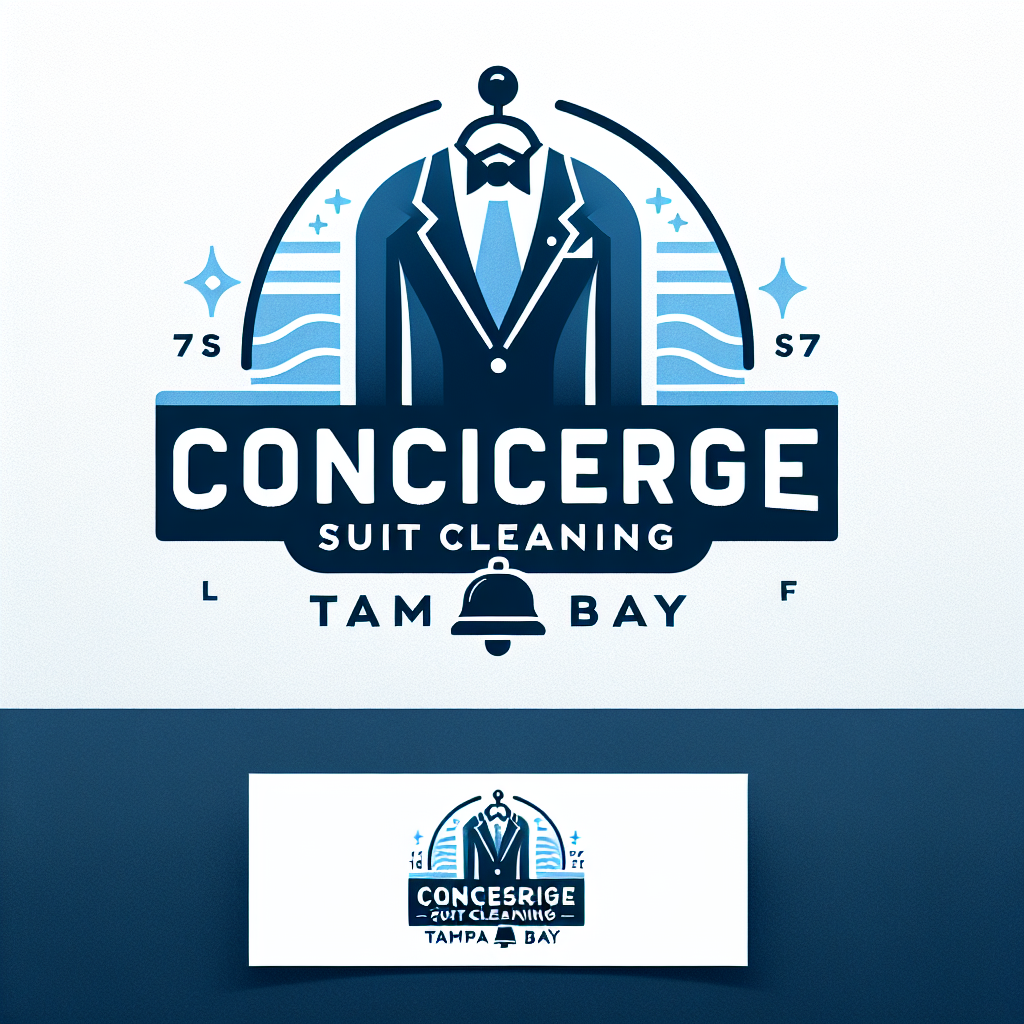The Art and Science of Suit Fabric Preservation: A Deep Dive for Tampa Bay Professionals
In Tampa Bay, where climate variability and active lifestyles challenge the integrity of high-quality suits, understanding the nuanced care of suit fabrics and materials becomes essential. As a seasoned textile conservation expert, I can attest that preserving your suits extends beyond routine cleaning—it’s about applying science-backed, expert-level techniques tailored to specific fabrics. Proper maintenance not only sustains aesthetic appeal but also ensures durability, comfort, and value retention over time.
Decoding Suit Fabric Types: The Foundation of Expert Maintenance
From luxurious wool and resilient linen to advanced synthetic blends, each fabric demands a specialized approach. Wool, often favored for its insulating properties and elegance, benefits from gentle, eco-friendly cleaning processes, such as those detailed in eco-friendly suit dry cleaning. Linen, prized for its breathability, requires careful handling to prevent shrinkage and wrinkling, emphasizing the importance of expert pressing techniques. Synthetic fibers, while durable, may suffer from static or pilling if improperly cared for, highlighting the need for tailored solutions.
Advanced Strategies for Suit Material Maintenance in Tampa Bay
Given Tampa Bay’s humid subtropical climate, managing moisture exposure is critical. Experts recommend storing suits in breathable garment bags and employing dehumidification strategies to prevent mold and mildew. Regularly inspecting fabric integrity can identify early signs of wear, enabling preemptive interventions. For wool suits, mastering the science of wool suit care ensures longevity through proper cleaning cycles and pressing techniques that preserve fiber resilience.
How can Tampa Bay residents optimize suit fabric care amid high humidity and outdoor exposure?
In high humidity environments, professional advice advocates for quick drying, avoiding prolonged moisture contact, and using anti-static or anti-wrinkle treatments. Consultation with local experts can yield tailored, scientifically grounded routines that extend the lifespan of your suits, such as utilizing specialty pressing methods or eco-friendly cleaning solutions.
Innovative Fabric Care Technologies and Their Impact
Emerging technologies like ultrasonic cleaning and nanotechnology-based fabric protectants are revolutionizing suit care. These methods, supported by recent publications in textile science journals, offer gentler yet more effective cleaning—preserving intricate weaves and delicate linings while removing deep-seated stains and odors. Incorporating such innovations into your routine can significantly enhance suit longevity, especially when paired with expert storage and handling practices.
Call for Expert Collaboration and Continuous Learning
For professionals seeking to refine their suit maintenance strategies, I recommend exploring eco-friendly, non-toxic cleaning methods and staying abreast of the latest research in textile preservation. Engaging with local specialists and contributing your insights to community forums can foster a culture of excellence in suit care across Tampa Bay.
Leveraging Scientific Insights for Superior Suit Fabric Preservation in Tampa Bay
In Tampa Bay, where humidity and outdoor elements are persistent challenges, innovative fabric care solutions rooted in textile science are transforming how professionals maintain their suits. Utilizing advanced cleaning technologies, such as nanoscale fabric protectants supported by recent scientific studies (see the science behind eco-friendly suit cleaning products), can significantly enhance fabric resilience. These treatments create a protective barrier that repels moisture, stains, and dust, extending the lifespan of delicate fibers like wool and silk, especially when combined with expert storage and handling techniques.
Harnessing Textile Science for Optimal Suit Care: Exploring the Role of Fiber Chemistry in Tampa Bay
Understanding the chemical composition of suit fabrics opens a new frontier in preservation strategies. For instance, wool fibers contain keratin proteins that respond uniquely to environmental stresses such as humidity and UV exposure. By leveraging insights from textile chemistry, professionals can tailor cleaning agents that interact specifically with fiber structures, enhancing durability while maintaining aesthetic qualities. Recent studies published in the Journal of Textile Science & Engineering highlight innovations in enzyme-based cleaners that target organic stains without compromising fiber integrity (Sagepub article on enzyme cleaners).
Nuanced Approaches to Suit Storage: Beyond Basic Dehumidification
In humid climates like Tampa Bay, traditional storage solutions are insufficient for high-value suits. Advanced storage methods incorporate climate-controlled environments with precise humidity and temperature regulation, utilizing hygroscopic materials that absorb excess moisture without chemical treatments that might damage delicate fibers. Additionally, innovative garment bags imbued with nanotechnology-based vapor barriers can prevent mold and mildew formation while allowing fabric breathability. Implementing these high-tech storage solutions extends the lifespan of your suits and preserves their structural integrity.
What are the latest developments in nanotechnology applications for suit fabric preservation?
Emerging nanotechnologies involve the application of ultra-thin, durable coatings that repel water, dirt, and microbial growth. According to a recent review in the Advanced Materials journal, nanostructured fabric protectants create a physical barrier at the molecular level, significantly outperforming traditional chemical treatments in both longevity and environmental safety (Wiley Advanced Materials review). These innovations exemplify how integrating cutting-edge science into routine suit maintenance can revolutionize fabric resilience.
Integrating Smart Technologies for Continuous Suit Monitoring
Imagine a future where suits are embedded with nano-sensors that monitor environmental conditions and fabric health in real-time. These sensors can detect moisture levels, pH changes, or fiber stress, alerting owners or maintenance teams to potential issues before visible damage occurs. Companies like Wearable Technologies Inc. are pioneering smart textiles that communicate with connected devices, facilitating proactive care routines. Such innovations promise to reduce repair costs and extend the life cycle of expensive suits, especially in challenging climates like Tampa Bay.
Engaging with Scientific Communities for Tailored Preservation Solutions
Staying abreast of the latest research is crucial for professionals dedicated to excellence in suit maintenance. Participating in textile science symposiums, subscribing to peer-reviewed journals, and collaborating with research institutions can provide access to breakthroughs in fabric treatment technologies. For example, partnerships with universities researching biodegradable, eco-friendly fabric protectants can lead to sustainable yet effective preservation routines. Engaging in this knowledge exchange fosters a culture of innovation and continuous improvement within the Tampa Bay tailoring community.
Conclusion: The Future of Suit Preservation Lies in Science and Innovation
As we look forward, integrating scientific research and technological advances into everyday suit care is not just an option but a necessity for maintaining the integrity, aesthetics, and longevity of fine garments. By embracing enzyme-based cleaners, nanotechnology coatings, smart textiles, and climate-controlled storage, Tampa Bay professionals can set new standards in suit preservation—ensuring that each piece remains a testament to craftsmanship and innovation. For further insights into cutting-edge suit maintenance techniques, I invite you to explore our comprehensive resources and connect with industry experts dedicated to excellence in textile care.
Harnessing the Power of Fiber Chemistry: Precision Preservation Strategies for Tampa Bay’s Tailoring Experts
In the realm of high-end suit maintenance, a nuanced understanding of fiber chemistry is indispensable. Wool fibers, predominantly composed of keratin proteins, exhibit specific responses to environmental factors such as humidity and UV exposure. Recent advancements in textile chemistry have enabled the development of enzyme-based cleaning agents that target organic stains with surgical precision, effectively preserving fiber integrity as highlighted in the Journal of Textile Science & Engineering. These innovations allow Tampa Bay specialists to tailor their cleaning protocols, ensuring longevity and aesthetic excellence of each garment.
Innovative Storage Solutions: Beyond Traditional Dehumidification
Traditional storage methods often fall short in humid climates. Cutting-edge approaches incorporate climate-controlled environments with sophisticated humidity and temperature regulation systems. Additionally, nanotechnology-imbued garment bags with vapor barriers provide an unprecedented level of protection by preventing mold and mildew while maintaining fabric breathability. Incorporating hygroscopic materials that absorb excess moisture without chemical treatments further extends the life of high-value suits, making storage a science in itself.
What are the latest innovations in nanotechnology applications for suit fabric preservation?
Recent breakthroughs in nanotechnology have introduced ultra-thin, durable coatings that repel water, dirt, and microbial growth, significantly enhancing fabric resilience. According to a review in Advanced Materials, nanostructured fabric protectants form a physical barrier at the molecular level, offering superior performance over traditional chemical treatments in longevity and environmental safety (Wiley Advanced Materials review). Embracing these innovations allows Tampa Bay professionals to elevate their preservation techniques, ensuring suits withstand the test of time and climate challenges.
Optimizing Suit Maintenance with Smart Textile Technologies
Envision suits embedded with nano-sensors capable of monitoring environmental conditions and fabric health in real-time. These smart textiles can detect moisture, pH variations, or fiber stress, sending alerts to owners or maintenance teams for proactive intervention. Companies like Wearable Technologies Inc. are pioneering such innovations, which promise to revolutionize garment care by reducing repair costs and extending garment life, especially in Tampa Bay’s humid environment. Adoption of these technologies signifies a paradigm shift towards predictive maintenance rooted in textile science.
Engaging with Scientific Research: A Pathway to Continuous Innovation
Active participation in textile science forums, subscription to peer-reviewed journals, and collaborations with research institutions are vital for staying at the forefront of suit preservation. For instance, partnerships with universities researching biodegradable, eco-friendly fabric protectants can foster sustainable yet effective preservation routines. Such engagement not only enhances technical expertise but also cultivates a culture of innovation within Tampa Bay’s tailoring community, ensuring practitioners remain leaders in the field.
Conclusion: The Future of Suit Preservation is Scientific and Sustainable
Integrating cutting-edge science into suit maintenance routines empowers Tampa Bay professionals to achieve unparalleled preservation outcomes. From enzyme-based cleaners and nanotechnology coatings to smart textiles and climate-smart storage, each advancement contributes to a resilient, long-lasting wardrobe. To explore these innovations further, I encourage industry peers to connect with research networks and adopt a proactive approach to textile science, securing the legacy of craftsmanship for generations to come.
Expert Insights & Advanced Considerations
1. Fiber Chemistry Knowledge Enhances Preservation Techniques
Understanding the chemical composition of suit fabrics, such as wool’s keratin proteins, allows professionals to tailor cleaning agents that interact specifically with fiber structures, thus preserving durability and appearance over time. Recent research highlights enzyme-based cleaners that target organic stains without compromising fiber integrity, making them essential in expert suit care.
2. Climate-Controlled Storage Extends Suit Lifespan
In humid environments like Tampa Bay, utilizing climate-controlled storage with precise humidity and temperature regulation is critical. Incorporating nanotechnology-imbued garment bags with vapor barriers prevents mold and mildew while maintaining breathability, ensuring suits remain in optimal condition during long-term storage.
3. Nanotechnology Coatings Provide Superior Fabric Protection
Emerging nanotechnologies offer ultra-thin, durable coatings that repel water, dirt, and microbial growth. These physical barriers at the molecular level outperform traditional chemical treatments, significantly enhancing fabric resilience and longevity, especially in challenging climates.
4. Smart Textiles Enable Proactive Suit Maintenance
Embedding nano-sensors in suits to monitor environmental conditions and fabric health in real-time allows for predictive maintenance. This technology detects moisture, pH changes, or stress, alerting owners or maintenance teams before damage occurs, thus extending the garment’s lifespan and maintaining its pristine appearance.
5. Continuous Engagement with Textile Science Research Fosters Innovation
Active participation in textile science forums, subscription to peer-reviewed journals, and collaboration with research institutions ensure professionals stay at the forefront of suit preservation advancements. Partnering with universities researching eco-friendly fabric protectants can lead to sustainable, effective preservation routines, elevating industry standards.
Curated Expert Resources
- Journal of Textile Science & Engineering: Offers cutting-edge research on fiber chemistry, enzyme cleaners, and innovative preservation techniques, serving as a foundational resource for experts committed to continuous improvement.
- Advanced Materials Journal: Features reviews on nanotechnology applications in fabric protection, providing insights into the latest coatings and treatments that enhance suit durability against Tampa Bay’s climate.
- Wearable Technologies Inc.: Leading in smart textile innovations, their research and products on embedded sensors and predictive maintenance tools are revolutionizing suit care.
- University Textile Science Departments: Collaborations with academic institutions facilitate access to groundbreaking eco-friendly and biodegradable fabric protectant developments.
Final Expert Perspective
Mastering the art of suit fabric preservation in Tampa Bay requires an integration of advanced textile science, innovative materials, and proactive maintenance strategies. By leveraging insights into fiber chemistry, nanotechnology, and smart textiles, professionals can significantly extend the lifespan and aesthetic appeal of high-quality suits. I invite industry colleagues to deepen their expertise through these authoritative resources and contribute to a culture of continuous innovation—ensuring that each garment remains a testament to craftsmanship and scientific excellence.

